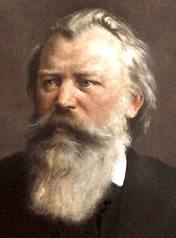Johannes Brahms, one of the most revered composers of the Romantic era, created a rich and compelling piece in 1873 titled Variations on a Theme by Haydn. This orchestral work, also known as the St. Anthony Variations, stands as one of Brahms’ most admired compositions, praised for its inventive structure, harmonic depth, and emotional range. But behind its beauty lies a fascinating story of historical curiosity, compositional mastery, and a bit of mystery regarding its true origins.
The Discovery of the Theme
The theme that inspired Brahms was found in a wind ensemble piece titled Chorale St. Antoni, which was attributed at the time to Joseph Haydn. Brahms encountered this melody in a publication while researching classical music, and he was struck by its noble character and unusual structure—a ten-measure phrase rather than the more traditional eight or sixteen. Intrigued by this anomaly, Brahms decided to use it as the basis for a set of variations.
Though Brahms believed the theme was by Haydn, later scholarship has cast doubt on this attribution. Today, many musicologists consider that the Chorale St. Antoni was likely composed by one of Haydn’s students, possibly Ignaz Pleyel, though definitive authorship remains uncertain. Despite this, the title of Brahms’ work has endured, honoring the connection to Haydn’s musical lineage.
A Dual Version: For Two Pianos and Orchestra
Brahms was deeply engaged in both piano and orchestral writing, and he composed Variations on a Theme by Haydn in two versions simultaneously: one for two pianos, and the other for full orchestra. The two-piano version was completed first and served as a sketch for the orchestral arrangement, which was completed shortly after.
The orchestral version was premiered on November 2, 1873, in Vienna, conducted by Brahms himself. It was met with widespread acclaim and is often credited with helping to cement Brahms’ reputation as a master of orchestral writing.
The Structure of the Composition
The piece opens with the theme, followed by eight variations and a grand finale:
- Theme (Chorale St. Antoni)
- Variation I – Graceful and lyrical
- Variation II – Rhythmic and dance-like
- Variation III – Mysterious, with subtle harmonic shifts
- Variation IV – Light and whimsical
- Variation V – Bold and dynamic
- Variation VI – Delicate and flowing
- Variation VII – Tense and dramatic
- Variation VIII – Energetic and climactic
- Finale – A masterful passacaglia, building to a triumphant conclusion
Brahms’ skill in orchestration shines throughout the work, especially in the finale, where he uses a passacaglia form—a repeating bass line—showcasing his admiration for Baroque forms and his ability to fuse them with Romantic expression.
A Milestone in Brahms’ Career
Variations on a Theme by Haydn was a pivotal composition for Brahms. Not only did it mark his first major success with a purely orchestral piece, but it also demonstrated his ability to blend the classical traditions of composers like Haydn, Beethoven, and Bach with his own rich harmonic language and emotional depth.
The work also set the stage for his later symphonic achievements, including his monumental Symphony No. 1, which he completed three years later in 1876.
Legacy and Influence
Today, Variations on a Theme by Haydn remains a staple in the concert repertoire, admired for its balance of structural clarity and expressive power. It continues to be performed and recorded frequently, both in its orchestral form and its version for two pianos.
Despite the lingering mystery of the theme’s true origin, Brahms’ genius in transforming it into a work of profound beauty and complexity is undeniable. Whether the theme was truly by Haydn or not, Brahms succeeded in paying homage to the Classical master while also asserting his own creative voice—a true hallmark of his art.


No responses yet